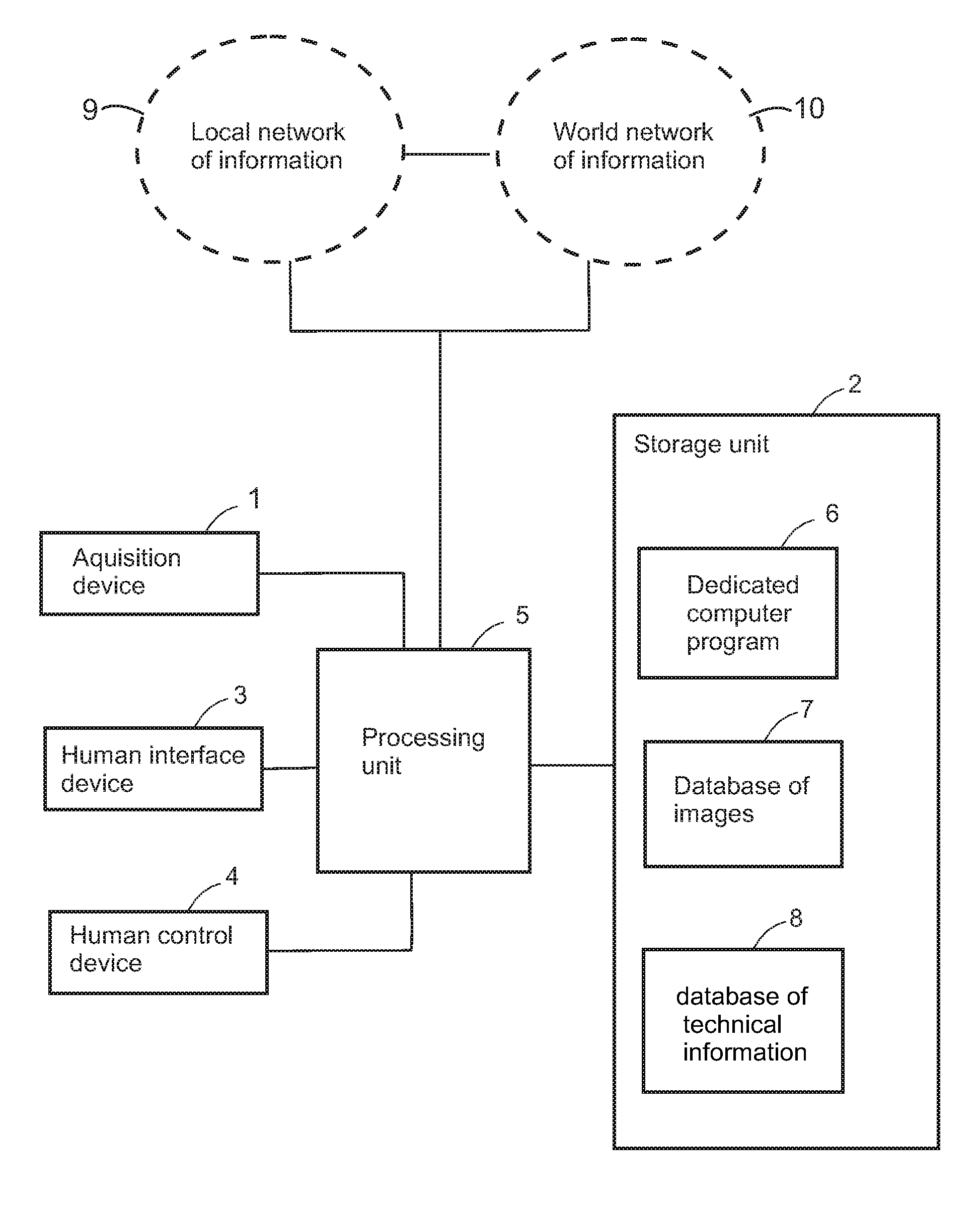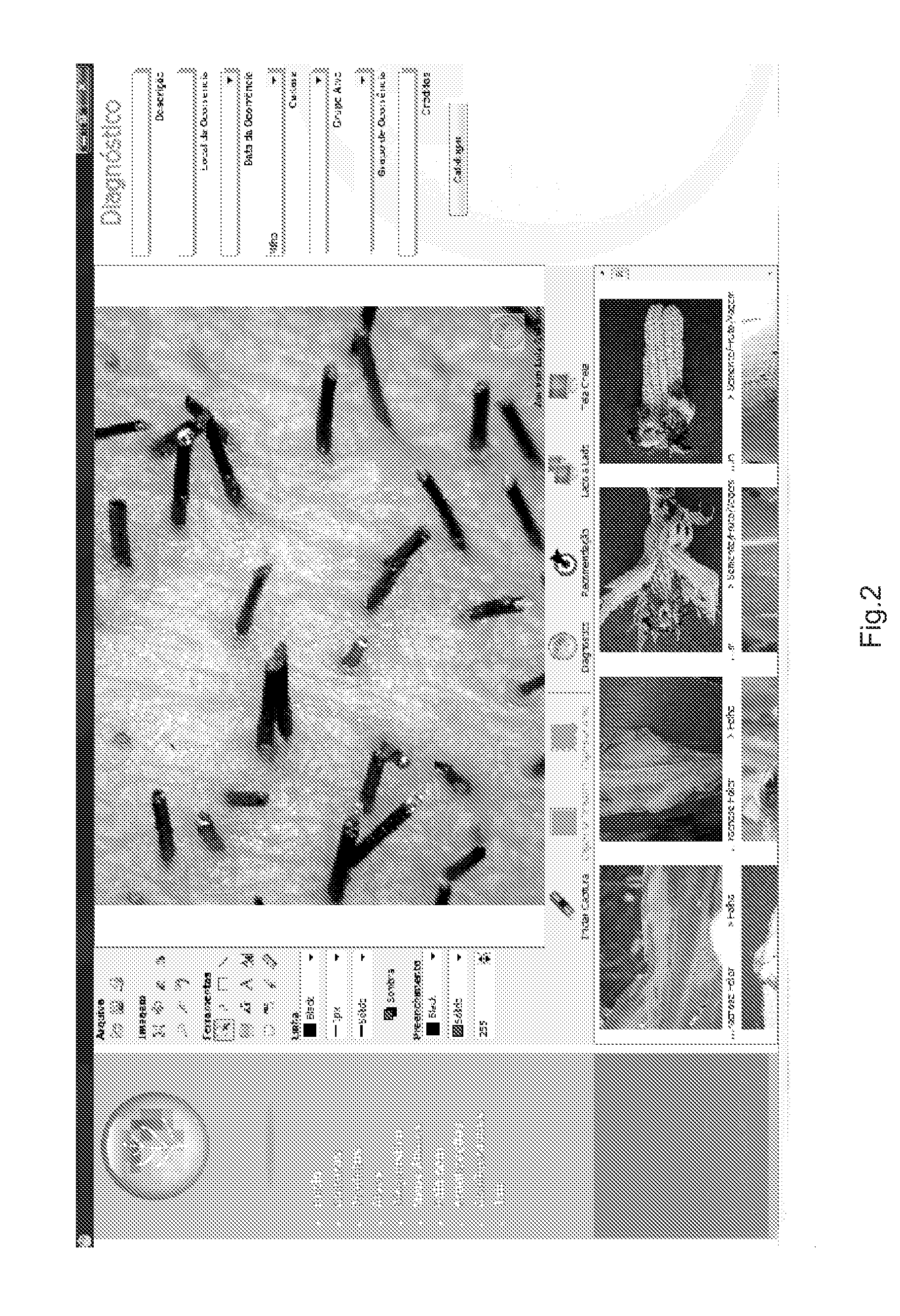System for diagnosis of plant anomalies
a plant anomaly and system technology, applied in the field of plant anomalies, can solve the problems of significant losses for farmers, affecting the quality and/or quantity of crop production, and the diagnosis is a relatively complex issu
- Summary
- Abstract
- Description
- Claims
- Application Information
AI Technical Summary
Benefits of technology
Problems solved by technology
Method used
Image
Examples
example 2
Identification of Asian Rust Focus
[0081]The resources provided by the diagnosis system of the present invention allow for identifying the presence of spores in a guaxa plant (which emerges due to grains fallen in the land) under stage of grain filling (R 5.4).
[0082]In this case, it is possible to capture an image of the plant by means of the acquisition device 1 and to register it on the storage unit 2, so that it can be handled and enlarged by using the human interface device 3, the human control device 4 and the processing unit 5, in order to detect the presence of the spores.
[0083]From the interchange module, it is possible to send instant warning messages to producers, distribution channels and consultants by e-mail through the world network of information 10 (Internet), informing the need of preventively applying fungicides in the region, since the crop can start experiencing a critical stage (spores present in the air).
[0084]This way, by using the system, it is possible to pre...
PUM
 Login to View More
Login to View More Abstract
Description
Claims
Application Information
 Login to View More
Login to View More - R&D
- Intellectual Property
- Life Sciences
- Materials
- Tech Scout
- Unparalleled Data Quality
- Higher Quality Content
- 60% Fewer Hallucinations
Browse by: Latest US Patents, China's latest patents, Technical Efficacy Thesaurus, Application Domain, Technology Topic, Popular Technical Reports.
© 2025 PatSnap. All rights reserved.Legal|Privacy policy|Modern Slavery Act Transparency Statement|Sitemap|About US| Contact US: help@patsnap.com



